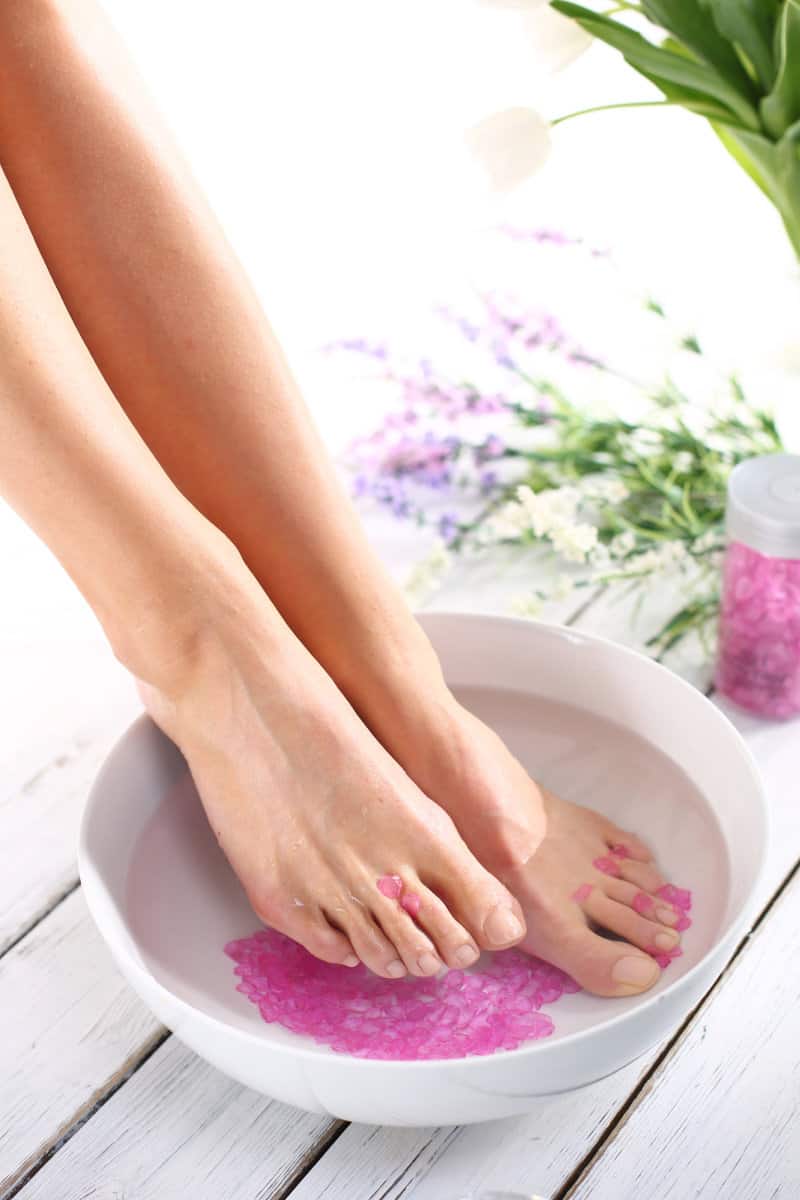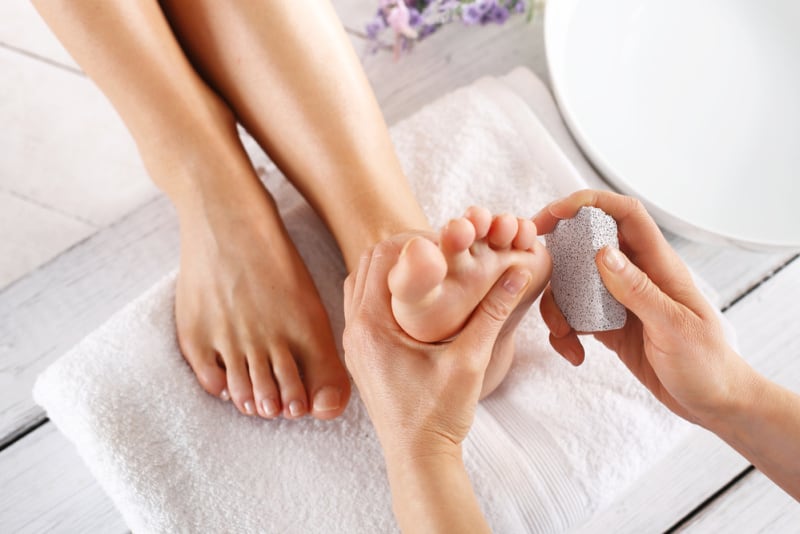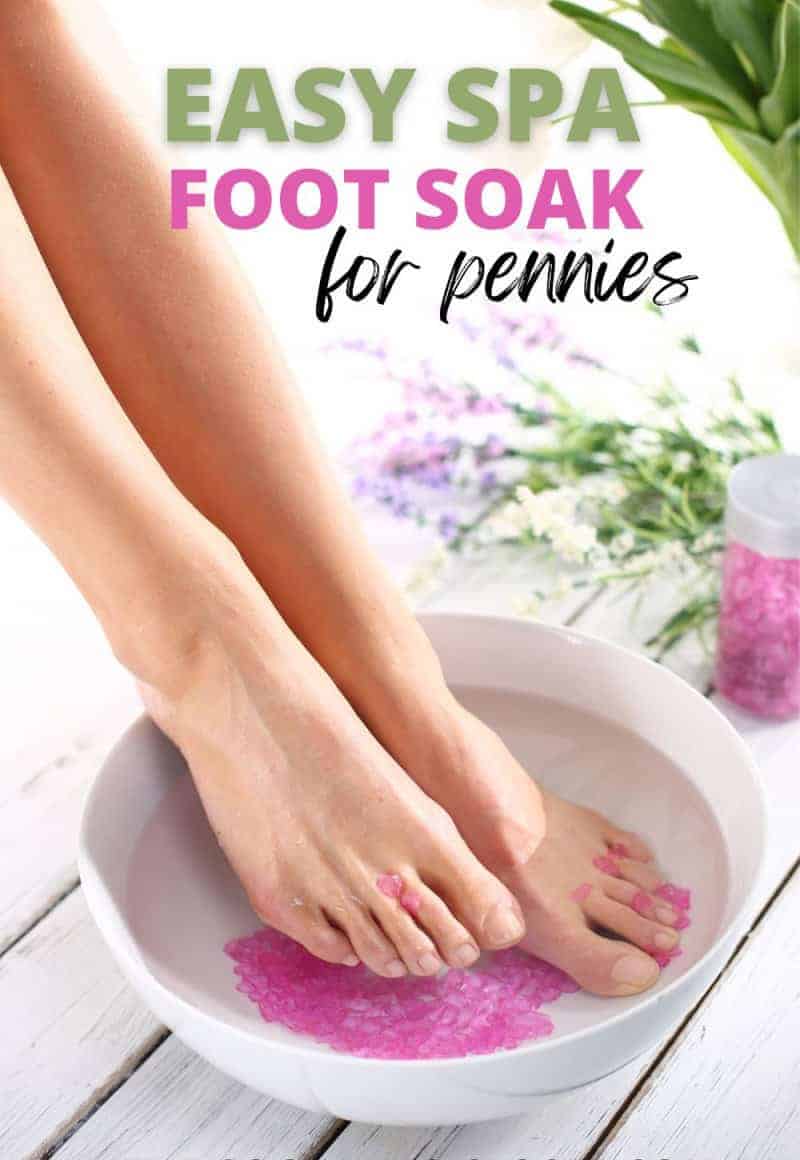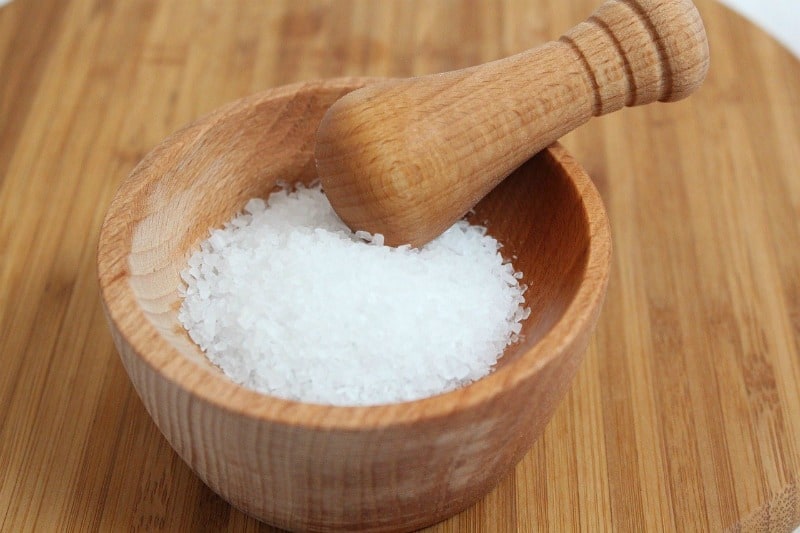Last Updated on May 29, 2023 by Ellen Christian
Have you ever tried a vinegar and baking soda foot soak? Skip the spa and remove excess dead skin cells with this homemade foot soak.
Posts may be sponsored. This post contains affiliate links, which means I will make a commission at no extra cost to you should you click through and make a purchase. As an Amazon Associate I earn from qualifying purchases.

Vinegar and Baking Soda Foot Soak
There is something very relaxing about exfoliating foot soaks. I’ve gone to the spa a few times and had a foot bath until I realized I could do it just as well at home.
Soaking your feet after a long day is not only relaxing, but it is a simple remedy that can help with cracked heels, tired feet, and even athlete’s foot.
This is a great acv foot soak recipe to remove dead skin. It softens calluses, helps with foot odor, and can eliminate foot fungus.
Do not use this DIY foot soak if you have broken or cracked skin. You may feel burning if you use a vinegar foot soak with these health conditions.
Speak to your doctor first about if you can detox your feet with apple cider vinegar to help with removing dead skin.
What you need for a DIY foot soak
If you enjoy making your beauty products, check out these DIY soap recipes. If you want a foot soak without Epsom salt, you can leave them out. Although I like it best this way.
- 1 cup of baking soda
- 1 cup of Epsom salt
- 1/2 cup of apple cider vinegar or white vinegar
- Warm water (do not use hot water)
- Large basin or bowl. You can also use a foot bath.
Optional: You can add a few drops of lavender or other essential oils for relaxation.
I recommend you also get a foot brush and foot file.

Best essential oils for foot soaks
You can use your favorite essential oils in this ACV soak.
Lavender
Peppermint
Eucalyptus
Tea tree oil
Tea tree oil is helpful if you have nail infections or fungal growth. It has anti fungal properties that may help with fungal infections on your feet.

Benefits of vinegar for your skin
Vinegar is a natural disinfectant that can help eliminate bacteria that may cause athlete’s foot or other foot problems.
The acetic acid in the vinegar helps to break down dead skin, making it an effective exfoliant. It’s one of the most effective ways to remove dead skin.
Vinegar is also a natural deodorizer, so your feet will smell fresh after soaking. This apple cider vinegar soak works for smelly feet, mild foot odor, and sore muscles.
You can add your favorite essential oil to hide the vinegar scent.
Can I use white vinegar?
Yes, you can use white vinegar for this foot soak. I prefer apple cider vinegar because it has additional benefits for the skin, but white vinegar will work just as well.
Benefits of Epsom salt
Epsom salt is a natural exfoliant that can help remove dead skin. It’s often used in DIY foot soaks for this reason.
The magnesium in Epsom salt helps to relax the muscles and relieve pain. This is especially beneficial if you have sore feet or cramped muscles.
Epsom salt also has antifungal properties, which can help to treat athletes’ foot and other foot problems.
I’ve even heard people praising the apple cider vinegar heal pain improvement but I have never tried it for that.
Benefits of baking soda for skin
Baking soda is a natural cleanser that can help to remove dirt and bacteria from the skin. It’s alkaline nature helps neutralize foot odor and absorb sweat. And, baking soda is also an effective exfoliant that can help remove dead skin.
This product presentation was made with AAWP plugin.
How to make a vinegar and baking soda foot soak
1. Add the baking soda, Epsom salt, and apple cider vinegar to a large basin or bowl.
2. Fill the basin with warm water, stirring to dissolve the ingredients.
3. Soak your feet for 20-30 minutes, then pat dry.
4. Apply a moisturizer to your feet if desired.
5. Repeat as needed.

How to use a pumice stone
A pumice stone is a natural way to exfoliate the skin on your feet. You can use it after you soak your feet.
After soaking your feet, use the pumice stone to remove dead skin gently.
Start with wet feet and work in small, circular motions. Rinse the pumice stone often to remove dead skin cells.
Gently pat your feet dry and apply a moisturizer. Repeat as needed. This is an important step if you have dry skin or itchy skin.

How often can I use a vinegar foot soak?
You can use a vinegar foot soak as often as needed. I use it a few times a week or whenever my feet feel tired or sore.
If you have sensitive skin, you may want to start once a week and increase as needed. You may also want to cut back on the amount of time you soak your feet.
If this causes skin irritation, stop immediately. Diabetics should check with their doctors before using vinegar foot soaks.
Finally, you may enjoy these posts:
- Oatmeal bath soak recipe
- Homemade bath soak for sore muscles
- DIY soap recipes
- Orange peel soap recipe

Ellen is a busy mom of a 24-year-old son and 29-year-old daughter. She owns six blogs and is addicted to social media. She believes that it doesn’t have to be difficult to lead a healthy life. She shares simple healthy living tips to show busy women how to lead fulfilling lives. If you’d like to work together, email info@confessionsofanover-workedmom.com to chat.


